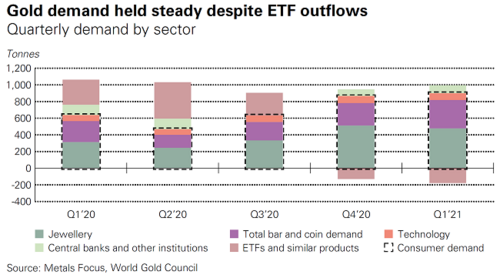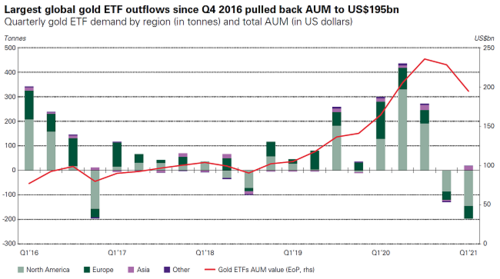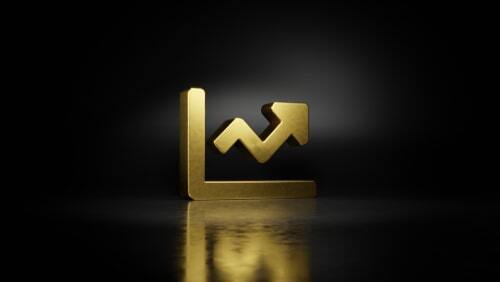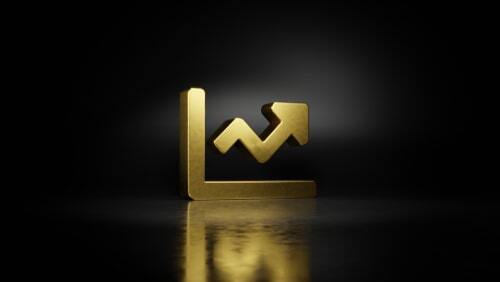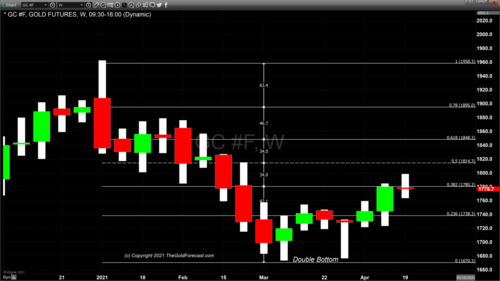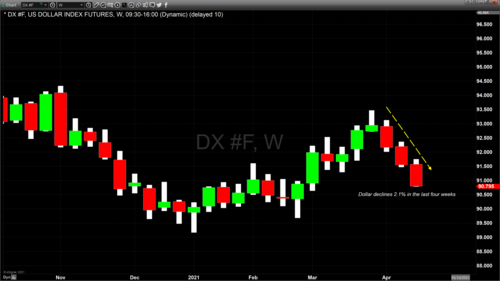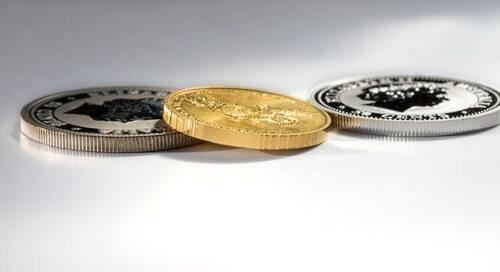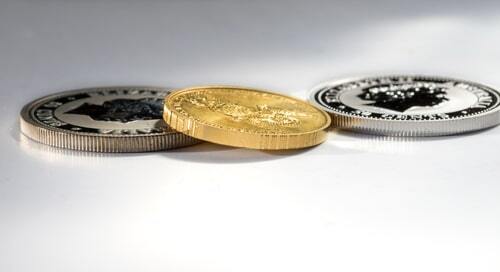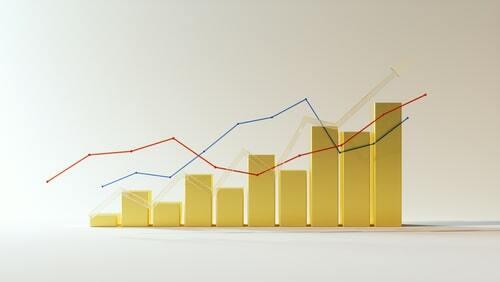Can massive bitcoin selloff push gold price above $1,800 next week?
Gold attempted to tackle the $1,800 an ounce this week — a level, which once breached, could help get the precious metal above $1,900 an ounce, according to analysts.
Even though the attack on $1,800 was unsuccessful for now, analysts remain optimistic on gold's near-term price direction. The positive outlook is largely due to two drivers — the recent bitcoin selloff and U.S. President Joe Biden's plan to nearly double the capital gains tax rate for wealthy Americans.
At the time of writing, June Comex gold futures were trading at $1,776.90, flat on the week.
"We can get a move in gold after seeing the double-bottom. And next week might be the catalyst to push the precious metal higher due to bitcoin's drop and Biden tax announcement," RJO Futures senior commodities broker Daniel Pavilonis told Kitco News.
Bitcoin selloff
The popular cryptocurrency was down more than 9% on Friday, heading for the worst week in almost two months. At the time of writing, bitcoin was trading at $50,045, down 5.62% on the day.
This renewed negative volatility in bitcoin could prove beneficial to gold, which has been losing the popularity battle against bitcoin.
"Bitcoin chart looks a bit negative. Bitcoin has been one of the reasons that held gold back. Some natural buyers of gold have been buyers of bitcoin. And if bitcoin stays down, next push higher in gold could see more sponsorship, and the precious metal could take some people back from bitcoin," said LaSalle Futures Group senior market strategist Charlie Nedoss.
Bitcoin's $48,000 level is important to keep an eye on. "This is where I saw chart support," said Nedoss. "Bitcoin could trade down to $43,000 — that is where the 200-day moving average is. The cryptocurrency hasn't traded below $45,000 since breaching it back in February."
Nedoss added that if $54,000 can hold, it would be positive for bitcoin.
Biden's capital-gains tax increase
Biden's proposal means that the federal tax rates for some investors could be as high as 43.4%, Bloomberg reported citing people familiar with the matter.
"Some of the highest capital-gains taxes around the world are in the 30% mark. Most are around 20%. This is an overreach. And with Biden's infrastructure spending plans, we could be looking at stagflation," Pavilonis said. Stagflation is a period of inflation combined with a decline in GDP.
Biden's plan is impacting equities, cryptocurrencies, and most importantly, the U.S. dollar, which has an inverse relationship to gold.
"The dollar does not seem to be liking a lot of the policies coming out of Washington, including the Biden administration's proposed new capital-gains tax increase. Also, one of the next big initiatives is infrastructure spending. Both of those factors are hurting the dollar, and that is positive for gold," said Gainesville Coins precious metals expert Everett Millman.
If the tax structure becomes less favorable for those investors holding a lot of capital priced in U.S. dollars, they are going to find other places to put their money, Millman explained. "If the capital gains tax makes the U.S. a less favorable destination, there will be less incentive for people to hold money in U.S. dollars. That is going to hurt the purchasing power of the dollar generally," Millman said.
Also, markets are not forgetting about inflation, which is said to be a major driver for gold later this year. "Inflation expectations are the highest they have been in years. We have not seen a lot of measured inflation yet because the velocity of money is pretty low. But with infrastructure spending coming up, markets think that at some point, this will boost inflation," Millman added.
Getting through $1,800
Pavilonis noted that once we get above $1,800, gold's moves higher could become bigger due to fewer resistance levels.
"Gold and silver would do very well. We are set up for a longer run higher here in gold. If we close above $1,800, we can move up quickly towards $1,900," he said.
For gold to get past the $1,800 level, the U.S. dollar index would have to drop below 90, noted Nedoss. "On the week, gold hasn't done too bad. As long as we close above $1,765, it will be a positive week," he said. "We would need to see the U.S. dollar put in new lows to take out $1,800. Might need the 89 handle in the dollar index."
The reason why $1,800 is proving to be a strong resistance level is that the $1,806 level is the 100-day moving average for gold. "It's possible to hit $1,800. With all this inflation talk, I am surprised gold is not doing better," Nedoss said.
Millman noted that if $1,800 is breached, there is "a ton of room for gold to rally towards its highs in the $1,900 range."
However, for next week, one thing to be aware of is potentially downward pressure coming from positive macroeconomic data, Millman warned.
"We have seen some green shoots in manufacturing. A lot of short-term reactions to economic data will be bad for gold and good for the broader economy. The $1,800 is pretty strong resistance level that bulls would have to fight to push gold above it."
Data to watch
There is a slate of macroeconomic data to keep an eye on next week. The most-watched event will be the Federal Reserve's monetary policy meeting, which concludes on Wednesday and will be followed by the central bank Chair Jerome Powell's press conference.
"The Fed is set to leave monetary policy unchanged – rates remaining in the 0-0.25% range and QE monthly asset purchases at $120 billion – with policymakers set to re-affirm there will be no shift in stance until 'substantial further progress' on the recovery," said ING chief international economist James Knightley.
Also, the Bank of Japan will be making its interest rate announcement on Tuesday.
Thursday will be an important day to monitor on the data front, with the U.S. GDP Q1 preliminary numbers, jobless claims, and pending home sales on the docket.
"Q1 GDP report is likely to show another fantastic growth figure, led by stimulus fuelled consumer spending. We are expecting annualized growth of 7.4%," Knightley added.
Analysts will also be monitoring the U.S. durable goods orders on Monday, house price index and CB consumer confidence on Tuesday, as well as the PCE price index on Friday.
On top of all the data releases, Biden is scheduled to make his first speech to a joint session of Congress on Wednesday. Markets will be looking for more details about his tax hike plans.
By Anna Golubova
For Kitco News
Kinesis Money the cheapest place to buy/sell Gold and Silver with Free secure storage
David – http://markethive.com/david-ogden

